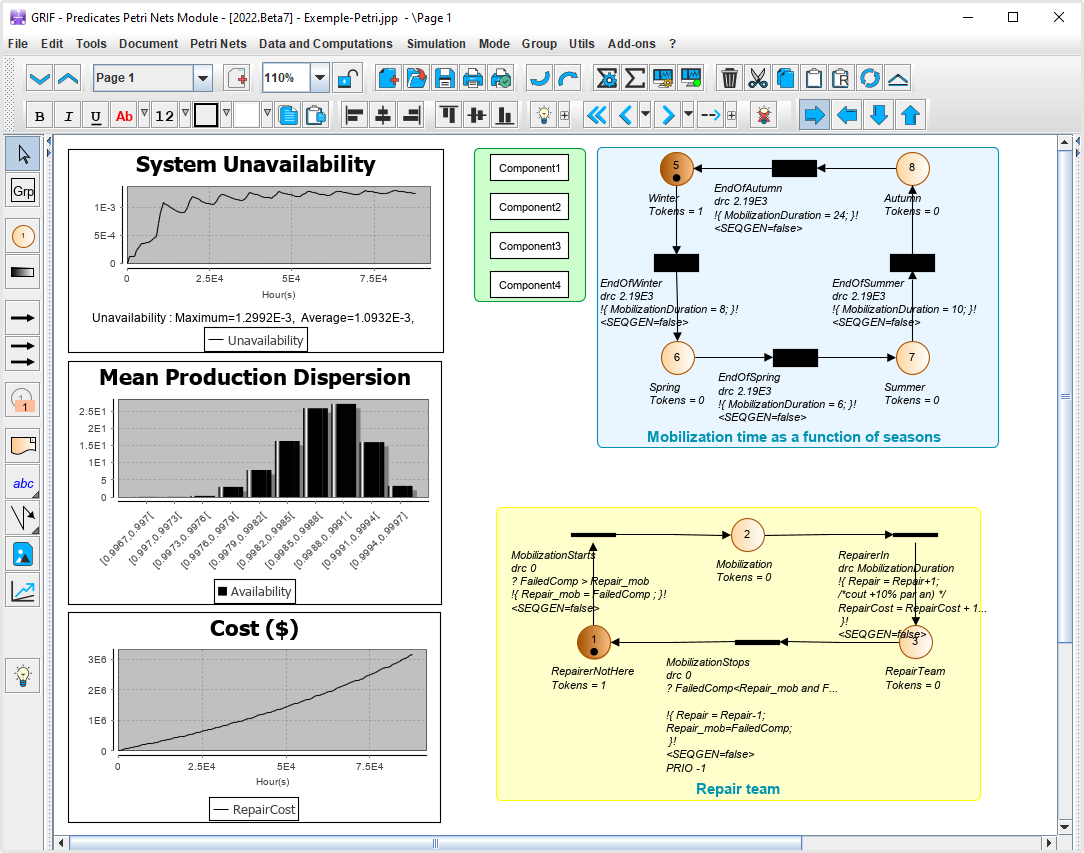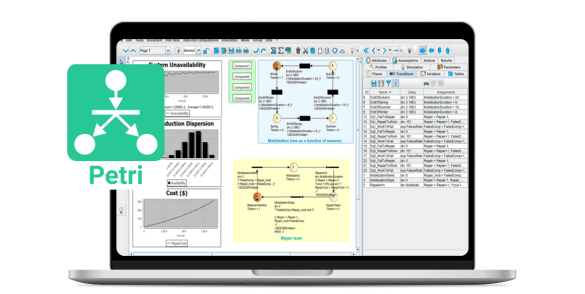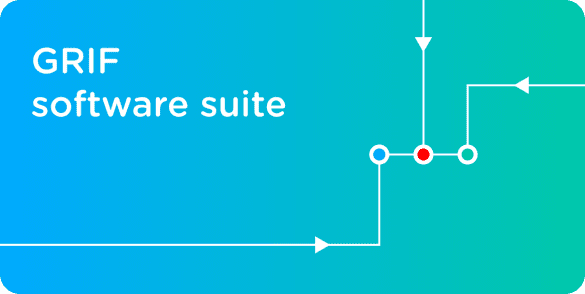With the intuitive graphic interface of the Petri module, a Petri net tool of the GRIF Software suite, creating Petri nets is easy.
- You can create places, transitions, arcs and tokens, with access to all types of mathematical variables and logic operators (OR, AND, If-Then-Else, Min (), Max (), etc.). . These variables represent indicators and can be used to validate transitions (Predicates) and can also be modified when firing transitions (Assertions).

-
Once the system has been modeled, the Moca-RP engine produces a range of results:
- Evaluation of any indicator created by the user over a given period.
- Seven types of statistics available for each variable (mean over the calculation period, mean per time interval, variation frequency, etc.).
- Analysis of the different values during the different simulated histories.
- Frequency of transition firing.
- Sequences or minimal cut sets leading to a specific event.
- Mean sojourn time and mean marking for each place, etc.
The module is so versatile that it can provide both standard dependability values (availability, reliability, etc.) and information about production systems (quantities produced, number of resources used, etc.).
Priorities between different actions, work schedules, inventory management, operating costs, or policy changes after an event occurs; all this data can be entered in the Petri module.
- Power of expression The main advantage of stochastic Petri nets with Predicates and Assertions lies as much in their modeling capacity as in their ability to define the dysfunctional (component failures) and operational sections of an installation. No theoretical limits of use: this module can be used for any system. Strong dependencies between components can be modeled and reconfigured over time using deterministic or stochastic transitions: exponential, Weibull, triangular, uniform or any other distribution that may have been programmed. Hybrid simulations can be run by linking Moca-RP to a C++ code in order to define the physical properties of the system (temperature variation, propagation calculation, etc.). Additional data, such as priorities between different actions, maintenance times, inventory management, operating costs, or a change in policy after an event, can easily be integrated into this module.
- Step-by-step interactive simulation: The Petri module is equipped with a step-by-step simulator, a key feature for checking/validating models. It also helps ensure the model’s accuracy before computations are run. In addition, the simulator can be used to explain system behavior and is a good training tool for helping people understand how it works.
- The Petri module is so versatile that it can be used in a wide variety of industrial sectors: nuclear energy transportation, aerospace, oil and gas, etc.
The Petri module is designed according to a hierarchical tree structure common to all the modules in the Simulation package.
- The smart copy/paste function improves modeling performance by connecting the data used by the selected part (or duplicating it depending on the user’s requirements) to existing data. Prefixing, suffixing and renaming functions are also available when you copy and paste Petri net objects.
- The Petri module uses the graph tree structure common to all the modules, so that users can create system subdivisions. Component prototypes can be created and stored in a library and then reused, either directly as Petri nets to create a larger Petri net, or as stochastic block diagrams in the BStoK, Petro or Flex modules.
Multi-core computing: as with all the modules in the simulation package, calculations can be performed on several processors simultaneously which significantly reduces calculation time. A high-performance computing plug-in is also available for use with supercomputers.









